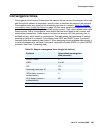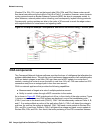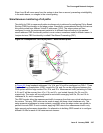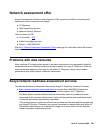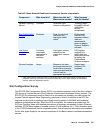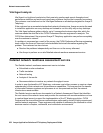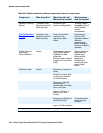
Network recovery
348 Avaya Application Solutions IP Telephony Deployment Guide
Controlling edge routers
CNA maintains a BGP peering with every edge device it needs to control. It is configured as a
route reflector to the edge devices, which allows it to (1) receive state of the routing table from
the edge devices, and (2) send BGP control messages to the edge routers pertaining to
destinations it needs to control. The edge routers need to be configured so that route updates
from CNA are given priority over other route updates regarding the same destinations. This is
accomplished by giving either a higher Weight or a higher LOCAL PREF to updates coming
from CNA. If given higher Weights, the route updates’ high priority status will only apply on the
edge routers themselves. If given higher LOCAL PREF, then the high priority status of these
route updates will apply across the entire Autonomous System.
Some router vendors, such as Juniper don’t support weight. For routers from those vendors,
LOCAL PREF is used to give high priority to routes updates sent by CNA.
In the scenario shown in Figure 94:
Headquarters CNA deployment – Measurement plane on
page 347, CNA-1 and CNA-2 would be configured as route reflectors to Routers R1a, R1b, and
R1c respectively. Routers R1a, R1b and R1c would be configured to apply higher LOCAL PREF
to updates received from CNA-1 and CNA-2, respectively. When CNA-1 sends a route update
to R1a, the route update will win and traffic will be routed accordingly; similarly for when CNA-1
sends a route update to R1b.
Translating low level statistics to an Application Performance rating
See CNA Application Performance Rating on page 254 for a description of the CNA Application
Performance rating (APR) based on application models.
Signaling traffic uses TCP and consists of short transactions. The CNA application model that
best captures the characteristics of signaling traffic is the enterprise application model. The
enterprise application model takes into account the impact of delay and loss on the TCP
transport protocol. It also assumes short transactions and uses transaction delay as the
measure of performance, which is translated into the 0-5 Application Performance rating.
Configuration and deployment details
Appendix A: CNA configuration and deployment on page 359 provides detailed procedures for
configuring CNA.






